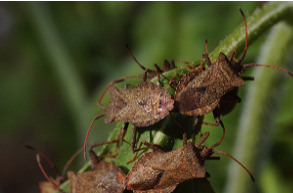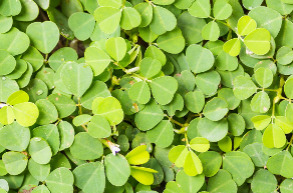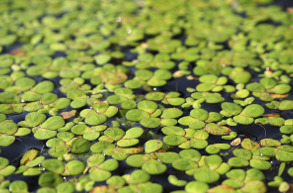Wild Violet Control
Most Effective Products
How to Get Rid of Wild Violet
This page is an expert guide on getting rid of Wild Violet from your property using the products and methods suggested by our experienced lawn care specialists. Follow this guide and use the recommended products and we guarantee you will be successful in eliminating Wild Violet.
Violets may be a pretty plant that poetry is written about and are often picked and put in the hair of little girls, but they are actually an aggressive weed that can mess up all the hard work you put into your lawn. Wild Violet can withstand drought and can be frustratingly difficult to remove.
Wild Violet likes to grow in shadier areas where grass doesn't grow as well and features a growth pattern that results in leaves forming thick mats that can overtake your yard if you don't intervene. If you try to mow or hand-pull them, because they are often underground, they will pop right back up before you know it.
Wild violets can be controlled, though it takes some persistence and regular treatment. If you are having an issue with Wild Violet on your property, follow our DIY treatment guide below which offers expert-recommended herbicide products to use and pro techniques that can eliminate the problem quickly and affordably.
Identification

Wild violet can be identified by heart-shaped leaves that are wide and purplish-blue flowers. There are some varieties of Wild Violet that have white flowers or those that are speckled. People often purposely like to grow these flowers in their yard or garden with the downside being that they are invasive.
There are actually two kinds of flowers that Wild Violets have. The first is, of course, the pretty purple ones which grow in the spring and are well recognized in the summer, Wild Violet produce flowers that are plain green and usually hidden beneath leaves or even underground, that are the main problem. While the purple flowers may be sterile, the plain violets are self-fertilizing and can spread quickly can wreak havoc on your lawn.
Use the description and image above to properly identify Wild Violet on your property. If you are having trouble, contact us and we will try and assist you with correct identification.
Inspection

Where to Inspect
Wild violet does not like to form under the sun, opting to grow in shady areas where the grass is sparse. This helps to make it so turfgrass isn't able to help choke it out. Scan areas of your lawn where there is shade or where grass is not growing as well and you will be likely to find Wild Violet there.
What To Look For
You should be looking for Wild Violet flowers to see how large of a concentration you have and what phase of development they are in. This can be quite easy if they have those easily identifiable purplish flowers already blooming. Wild Violet also has a rhizome system which makes it hard to hand-pull the weed because it will come right back.
Treatment
If you have confirmed where the Wild Violet is growing on your property then treat them with a post-emergent herbicide treatment of Triclopyr 4 Brush Killer. This professional-quality herbicide is labeled to control Wild Violet. It is easy to use, is systemic and is selective so it will only target the weed and not harm your desired vegetation.
Before handling or mixing any herbicide chemicals, please make sure you have the proper personal protective equipment on in the form of gloves, a safety mask, and protective eyewear.
Step 1: Mix And Apply Triclopyr 4

Measure the square footage of the treatment area to determine how much Triclopyr you will need. Triclopyr should be mixed with a gallon of water at the rate of 0.375 to 0.75 fl. oz. per 1,000 square feet. Mixing Triclopyr 4 with a surfactant like Alligare 90 (at a rate of 0.33 fl. oz.) will help the product to stick better to the weed and make the herbicide work more effectively.
For example, if you have a 2,000 sq. ft. area to treat, you will need to mix 0.75 to 1.5 fl. oz. in 2 gallons of water. Once you have made your measurements and calculated how much Triclopyr 4 you need, mix the product and surfactant with the appropriate amount of water in a handheld or backpack sprayer. Shake the sprayer to ensure the solution is well-mixed and then you're ready to spray.
You may need to repeat the application in order to ensure the weeds are gone permanently. If large areas of lawn are in poor condition and the violets continue to return, it is recommended to kill the entire lawn in late summer, replace the soil, and reseed in the fall.
Prevention

Once the wild violets under control using one of the methods above, the only long-term solution is to improve the health and vigor of the grass so it will choke out new plants before they become established.
Preventative steps may include reducing shade, improving soil drainage, watering turf during periods of dryness, and selecting grasses well adapted to local conditions. Mow on a high setting to help shade out weeds. It is especially important not to scalp shaded areas by mowing too low.
Key Takeaways
- Wild Violet is a common weed that grows on properties and is hard to control manually and mechanically due to its underground rhizomes.
- To treat growing Wild Violet, we recommend applying Triclopyr 4 Brush Killer.
- Prevent Wild Violet by reducing shade, improving soil drainage and mowing on a high setting.





















































































































































































































































































































































































































































































































